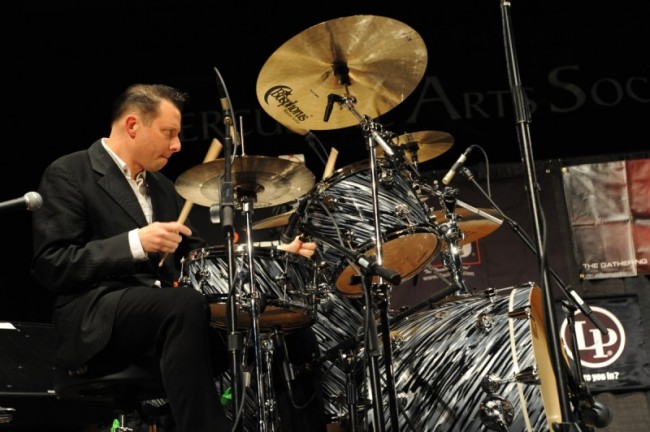The Impact of Gene Krupa
Gene Krupa was really the guy who took the drummer from being the time keeper in the back of the band and brought him forward, so that he or she was as much a part of the band as anybody else.
Fever – What a Lovely Way to Burn
For the past five years, I’ve been doing a weekly gig here in NYC called Jim Caruso’s Cast Party at Birdland. You never know who will show up – past guests have ranged from Art Garfunkel to Kenny Loggins to Lisa Lampinelli to Michael Feinstein. This week, we were joined by “Dancing with the Stars” winner Rumer Willis (daughter of Bruce Willis and Demi Moore), who tore down the house with a WICKED version of “Fever.”
Keep Being A Student
One of the ways I’ve remained inspired is that I’ve never stopped being a student – not only in terms of improving my technical abilities, but also as far as studying the history and tradition of drumming.

Why is New Orleans such a legendary music town? Here’s why …..
We always hear talk about New Orleans being such a great music town. Well, here’s a perfect example of WHY. Imagine living in a city where you can walk out your door every day and find this kind of a jam underway. And imagine if that jam was open to ANYONE who showed up with an instrument.
Hosted by singer and trombonist supreme Glen David Andrews, this particular jam incorporates Mardi Gras Indian chants, brass band second line, drum set, and electric guitar. Like New Orleans itself, it represents how musical barriers are meaningless when people come together, find common musical ground and play WITH one another. It’s not pretty, it’s not slick, it’s not organized, but it s damn sure REAL. Jams like this have been going on in N’Awlins for literally two hundred years or more (going back to the slave “ring shouts” in Congo Square)!
The young man in the foreground playing the marching snare can’t yet be ten years of age, but he is “in it” as deep as anyone esle – getting a serious lesson in groove, funk and a spirit of musical community that can’t be taught in school band, private lessons or any other “formal” setting. Without a doubt, he and his peers will grow up to fuse all these influences and produce a new generation of badassery to emerge from this one of a kind city. Just as so many others have for so many generations.
If you are a lover of music, do NOT leave this planet before spending some time in the Crescent City!
Irv Cottler – The Swing Behind Sinatra
If you’ve always loved the classic Frank Sinatra records from the ’50s and ’60s, but never knew who was laying down those impossibly swinging grooves behind him, permit me to introduce you to IRV COTTLER.
Many other drummers also played and recorded with Sinatra in this period (among them Sonny Payne and Speedy Jones – as part of the Basie organization – Alvin Stoller, Sol Gubin, Frank DeVito and Gregg Field ). But Irv Cottler had the longest association, and is definitely worth studying!
On this amazing performance of “Luck Be A Lady” from 1966, Cottler kicks in at 1:16 and shows us all just how to do it. Cottler recorded and toured with Sinatra on and off for over 30 years, starting in 1953. He also played with Louis Armstrong, Bing Crosby, Ella Fitzgerald, and was in the house band for the Dinah Shore show for 12 years.
Irv Cottler also put out an instructional book and record called “I’ve Got You Under My Skins,” which includes reproductions of the charts he played with Sinatra. Cool stuff!
Heyyy, BO DIDDLEY!
The Bo Diddley beat is easily recognizable because of its unique accent pattern. Bo used this accent pattern to great effect in many of his biggest hit records. And it became one of the identifying trademarks of early rock and roll. Two drummers were actually involved in the creation of the Bo Diddley beat. Well, really it was more like a drummer and percussionist.
First, you had Chicago Blues veteran Clifton James hammering out the famous accent pattern on his toms. And on top of that you can hear maraca man Jerome Green laying down a solid shaker pattern. When combined with Diddley’s reverb-laden guitar riff, the result was a greasy, syncopated, thunderous wall of sound that blew people’s minds and could truly be defined as one of the first authentic rock and roll records.




